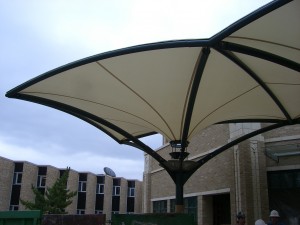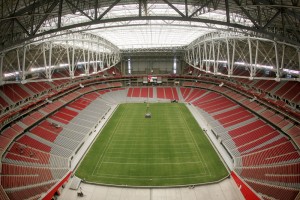Steel sections curved to construct anything from a simple, small canopy to a large retractable roof for a football stadium all contribute to the cause of sustainability. At times elements created by profile bending comprise the major part of a construction project; at other times, they comprise only a small part. In any event, the degree to which structural steel—curved or straight– is used in the built environment contributes to the length and quality of the earth’s environment.
The LEED Green Building Rating System, developed by the U.S. Green Building Council, has been crucial to promoting sustainability in design and construction. Under the LEED system, structural steel receives maximum credit for its contribution to the overall rating for a structure, due in large part to its recycled content and recycling rate.
According to the American Institute of Steel Construction (AISC), structural steel produced in the United States contains 93.3% recycled steel scrap. At the end of a building’s life, 98% of all structural steel is recycled back into new steel products with no loss of its physical properties. Structural steel isn’t just recycled but “multi-cycled,” as it can be recycled over and over and over again. It is truly a cradle-to-cradle material.
Furthermore, great strides have been made to make the production of steel “greener.”
In 1980, 12 man-hours were required to produce a ton of structural steel; in 2009, only 0.5 man-hours were required. And by 2009 there had been a 40% increase in the strength of steel. Other achievements include a 66% reduction in the energy required, a 38% reduction in carbon emissions, a 67% reduction in overall emissions, and the recognition by the EPA of having the best industry performance.









